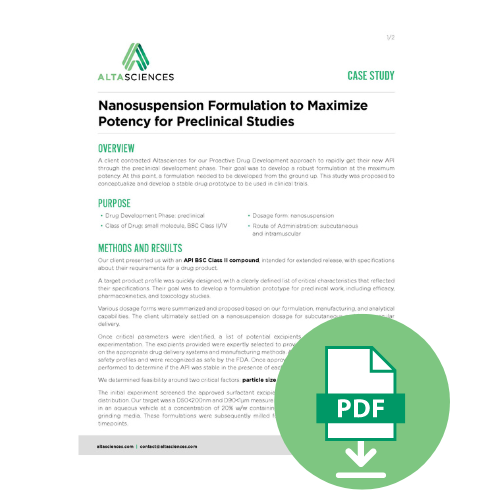Manufacturing and Analytical Services
BioBuzz: Part One—Exploring Philadelphia's CDMOs
Liquid-Filled Capsules: An Attractive, Marketable Solution
A Scalable Solution for Solubility Challenges
Case Study: How to Ensure Safety While Manufacturing Highly Potent APIs
Highly potent active pharmaceutical ingredients (API) require careful attention to safety and handling during formulation and manufacturing. This blog explores the process required for manufacturing a highly potent API for an ophthalmic indication, based on a case study involving loteprednol etabonate, a topical corticosteroid used to treat eye inflammations.
Top Life Science Resources for Fall 2024
There’s a lot of life science content out there, so for your convenience, we’ve curated a selection of expert insights, tips, case studies, and scientific and regulatory information. Catch up on what you might have missed below!
Shaping the Future of Medicine: Pharmaceutical Formulation Development
Nanomilling―Enhanced Drug Solubility and Bioavailability
ISSUE NO. 40 — Analytical Testing: Accurate and Complete Characterization of Your API to Maximize Bioavailability
In Issue 40 of The Altascientist, different analytical testing techniques to support drug product development specific to bioavailability are explored, including a case study on the manufacturing of a nanosuspension.
During the early stages of drug development, fully characterizing the active pharmaceutical ingredients (APIs) is crucial for optimizing the drug product formulation. Specifically, understanding your API’s particle size, crystalline structure (including different polymorph forms), and dissolution profile to inform downstream formulation dosing decisions for clinical trials.
In this issue of The Altascientist, you will discover:
- methods for identifying and characterizing your API;
- common techniques to determine particle size distribution (PSD);
- formulation approaches to maximize bioavailability; and
- a nanosuspension case study.
Case Study: Innovative Nanosuspension Approach to Maximize API Potency in Preclinical Formulation Development
Case Study—Nanosuspension Formulation to Maximize Potency for Preclinical Studies
Top 10 Life Science Resources for Summer 2024
There’s a lot of life science content out there, which is why we’ve curated a selection of our expert insights, tips, case studies, and scientific and regulatory information for your convenience. Catch up on what you might have missed below!
